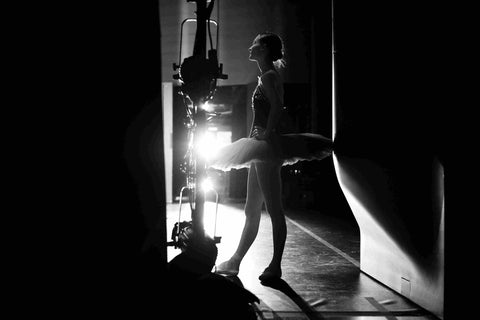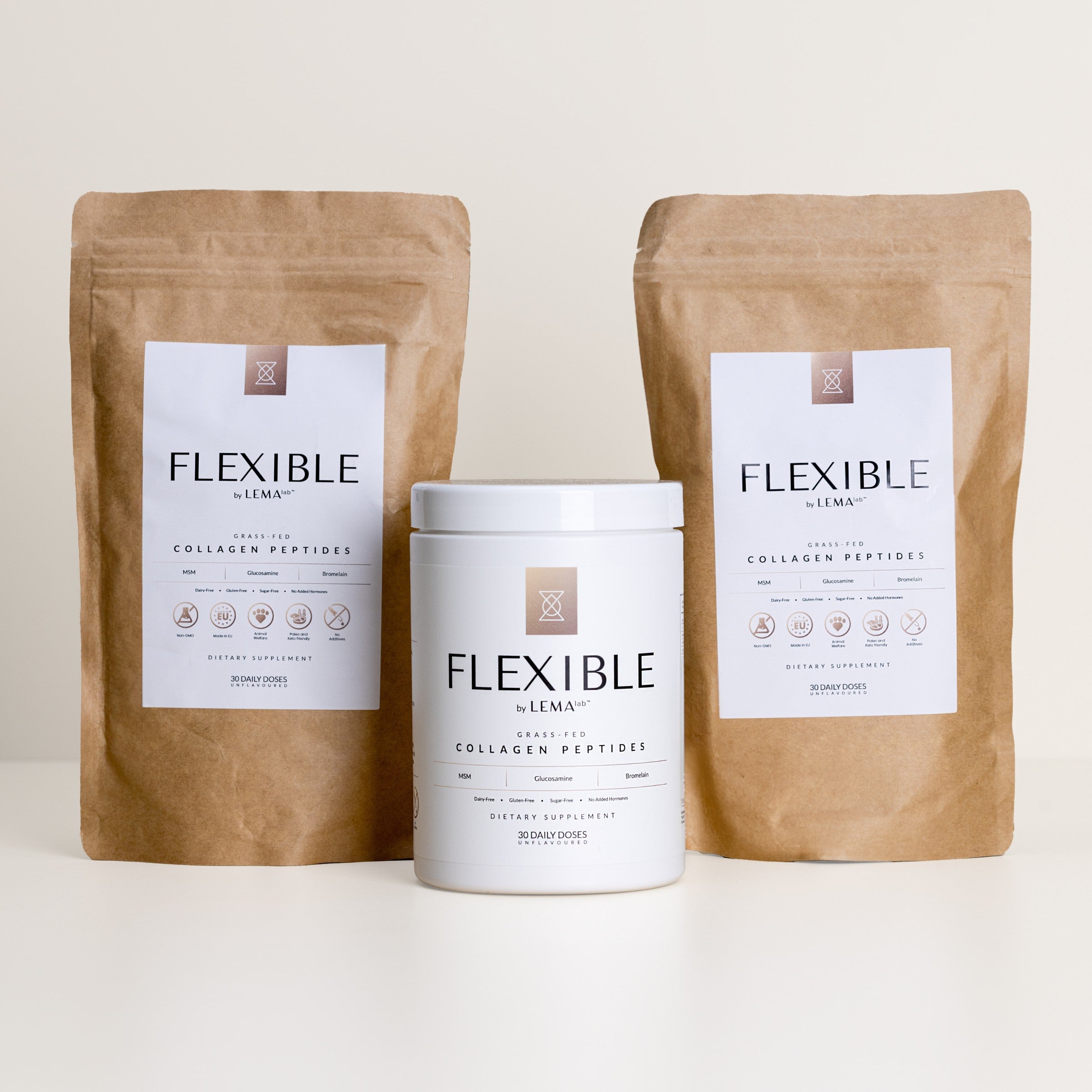
CHRISTINE SHEVCHENKO
I started dancing because it makes people happy, and I thrive on that feeling of connection to people's emotions.

How did your journey with ballet begin?
Given that sports and the arts often serve as a refuge for passionate children, did relocating to America and having to pause your practice for a while feel somewhat traumatic for you?

How was the training style in the United States different from what you had been used to in Ukraine?
Training in America was definitely more relaxed compared to Ukraine or Europe, which my mom immediately noticed and didn't like. Our family believed in intense discipline—if you want to achieve something, you had to give 100% or even 150% of your work ethic. Recognising this difference, she began seeking private coaches when I was around 11 or 12.
Could you share some of your go-to practices for recovery in terms of diet and lifestyle?
I prioritise body recovery after a few minor injuries and one major ankle sprain during my time at ABT studio company. It took about three to four months to recover from that, which was tough. Since then, I've been diligent about preventing any other injury like that from occurring again.
I get massages weekly from a fantastic Korean masseuse who combines techniques like chiropractic work and sometimes acupuncture. Sauna sessions a couple of times a week help with detoxification, and cryotherapy twice a week instantly relieves inflammation and soreness. I also take an Epsom salt bath daily for muscle relaxation and compression pants for lactic acid and circulation after exhausting days.
Rest is crucial, and I prioritise getting 7 to 8 hours of sleep per night, though winding down after late performances can be challenging. Despite that, I do my best to maintain a healthy routine.

What’s your diet like? How do you pace the timing of your meals and training?
I include supplements in my diet and prioritise consuming good, organic, healthy foods. While I enjoy a variety of foods, I aim to maintain a healthy eating pattern by choosing high-quality options. Recently, I've started incorporating LEMAlab FLEXIBLE collagen powder into my routine, which I'm quite excited about. I've been thoroughly enjoying it, especially when mixed with my coffee—it's a delightful addition to my day.
Navigating meal timing during training poses a personal challenge for me. With packed rehearsal schedules, I often struggle to meet my calorie intake goals throughout the day. Even during breaks, I'm mindful not to overeat as it gets difficult to move afterwards.
To combat this, I've found that snacking on filling foods helps me stay energised. In the morning, I enjoy yoghurt with fruits, bananas, or smoothies, and sometimes eggs. Throughout the day, I rely on snacks like nuts and hard-boiled eggs. Smoothies are a favourite, as they're versatile and satisfying. For dinner after rehearsals, I aim for balanced meals with vegetables, protein, and grains.
Do you have any complementary movement practice apart from ballet?
I've found gyrotonics to be really beneficial. It's similar to Pilates but involves circular movements that elongate the muscles. Occasionally, I'll do Pilates or yoga too. I don’t really do things like CrossFit training; it tends to make me feel tight and restricts my movement. While I'm quite flexible, I don't feel as effective in dance after this type of exercise. Sometimes I'll use the elliptical, but gyrotonics, Pilates, and yoga are my go-tos.

Going back to your injury, how did you deal with the mental component of getting through it?
It's incredibly challenging. Sometimes, if you're lucky, the injury fades away, but if not, there's often ongoing side effects. I definitely experienced fear—wondering if I'd ever fully recover, if I'd be able to perform without pain or swelling. Fortunately, I had supportive coaches and people who helped me navigate it all. They tailored workouts with what I could handle without aggravating the injury, gradually building up strength and mobility. Their guidance and support made a difference, and I'm grateful for that.
What is a regular day in your life?
On a typical day at American Ballet Theater, our schedule runs from around 10 AM to 6:30 PM. We start with a warm-up class at 10 AM for about an hour and fifteen minutes, followed by rehearsals at 11:30 AM. Rehearsal lengths vary depending on the ballets and roles we're involved in, ranging from continuous seven-hour sessions to shorter stints.
During non-performance weeks, we work Tuesday through Saturday, with performances adding an extra day to our schedule. Rehearsing for different productions each week, such as Swan Lake, Romeo and Juliet, and new productions, keeps us busy and can be quite exhausting. While we're performing one ballet at night, we're simultaneously rehearsing for the next, adding to the intensity of our schedule. Despite the demanding routine, you adapt and manage just fine once you settle into the flow.

What are the peculiarities of ageing in the dance world?
I actually think the ballet world preserves beauty in a way. Dancers often look much younger than their actual age. It’s pretty remarkable. At the same time, with age comes valuable stage experience, which has allowed me to focus on the artistic and storytelling aspects of dance. Artistry develops over time, with stage experience being crucial. I'm grateful for the journey that has led me to this point.
Ageing also comes with a deeper understanding of one's body. Sometimes, you don't need as many repetitions because you grasp concepts faster due to greater self-awareness. Company life often means limited rehearsal time, but with experience comes the ability to adapt and perform at a high level with less preparation.
How have you adjusted your lifestyle and training to address the genetic changes of ageing?
As you age, I feel flexibility tends to diminish, especially in my back. So, I've been putting extra effort into preserving it by focusing on back strengthening and stretching.
During my off time, I've been working on staying active as the body becomes more and more unforgiving to lack of movement. I've also incorporated additional body recovery practices into my routine to support my overall well-being.

Do you believe that having a very strong personality and resilience is essential for achieving an elite career?
It's something I had to learn. It wasn't innate. I've had many ups and downs, failures, and disappointments, despite appearances. Each setback taught me resilience and strength, reinforcing my determination to pursue my dream.
What were your motivations for becoming an ambassador with the International Rescue Committee (IRC)?
I've always wanted to support a charity. I enjoy helping others and making people happy. Dancing brings joy to people, and I thrive on that emotional connection. After researching many charities, the IRC stood out because it assists refugees, a cause close to my heart as my family and I were refugees ourselves. Upon meeting the people at the IRC, we instantly connected, and it felt like the perfect fit for me. I couldn't have found a better charity.
Would you attribute your success to your character and personality? Your genetics? Chance? Hard work?
Some aspects of my journey may have been chance, but it was mostly the result of hard work, along with the unwavering support of my single mother. She went above and beyond to help me achieve my dream, from finding the best coaches to ensuring I had the resources I needed and even arranging home-schooling to accommodate my intense dance schedule starting at age 14. Her dedication, combined with my own passionate work, brought me to where I am today.

If you had the opportunity to improve the dance world according to your vision, where would you begin? Are there specific aspects you believe require adjustments?
I believe that ballet lacks exposure currently, and to preserve it, we need to engage new generations. By exposing people to ballet, educating them about it, and igniting their interest, we can cultivate the next generation of audiences. Exposure is key, and hopefully, with increased exposure, financial support and pay will follow suit, especially for young dancers who are newer to this world.
What was the most significant moment of your career?
Winning the gold medal at the Moscow International Ballet Competition, along with becoming a principal at American Ballet Theatre (ABT), initially, I was not even planning on competing at the Moscow International Ballet Competition; I was planning to compete at the ‘Prix de Lausanne’. However, it didn't work out, leading me to the Moscow competition instead. It was an unreal experience and winning was definitely unexpected for me.
What career would you have chosen if you had not been a dancer?
You know, that’s hard to imagine. At one point, I wanted to become a chef because I have a passion for cooking and baking; it's a form of artistry. Alternatively, maybe something like interior design would appeal to me. Whatever it is, it would be artistic as well. However, ballet will always remain my top choice.
Find Christine Shevchenko on Instagram | Facebook | Web Site













